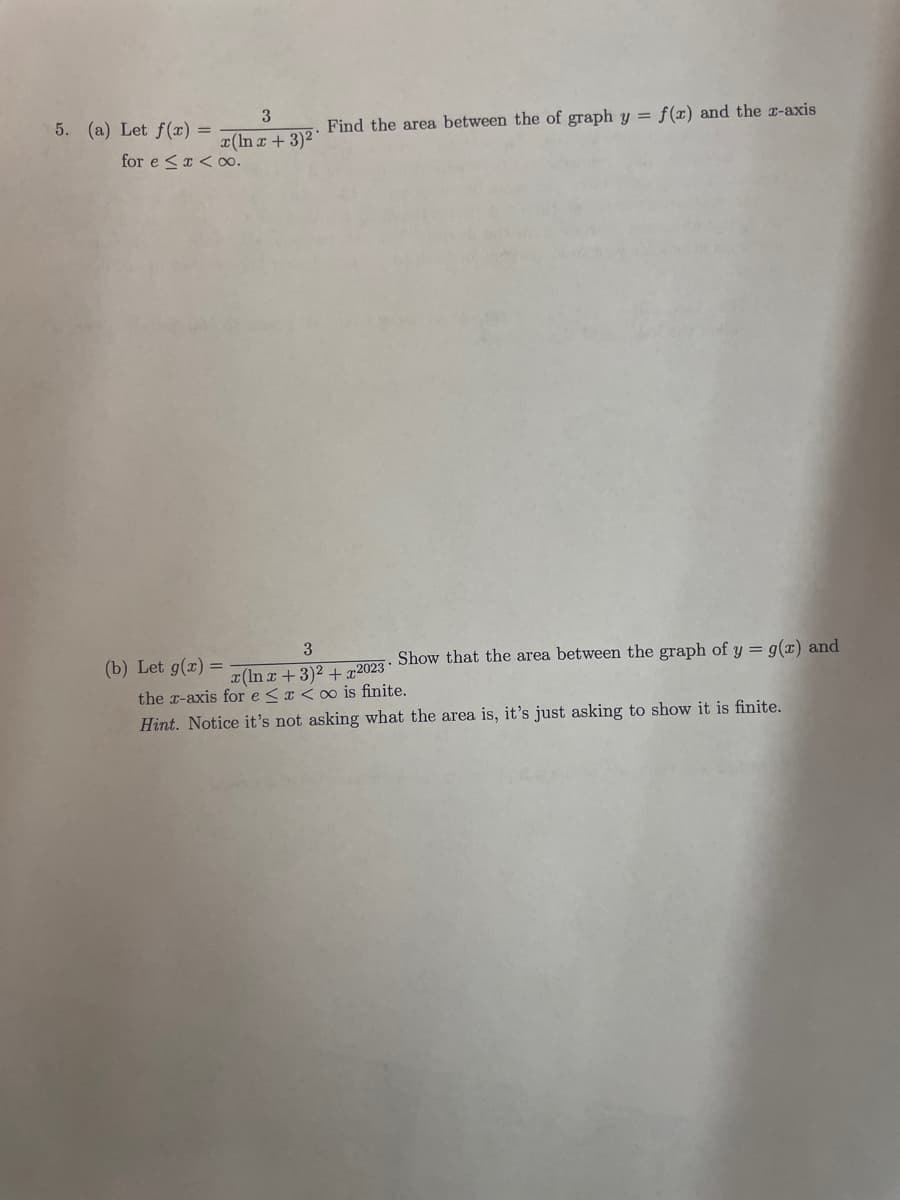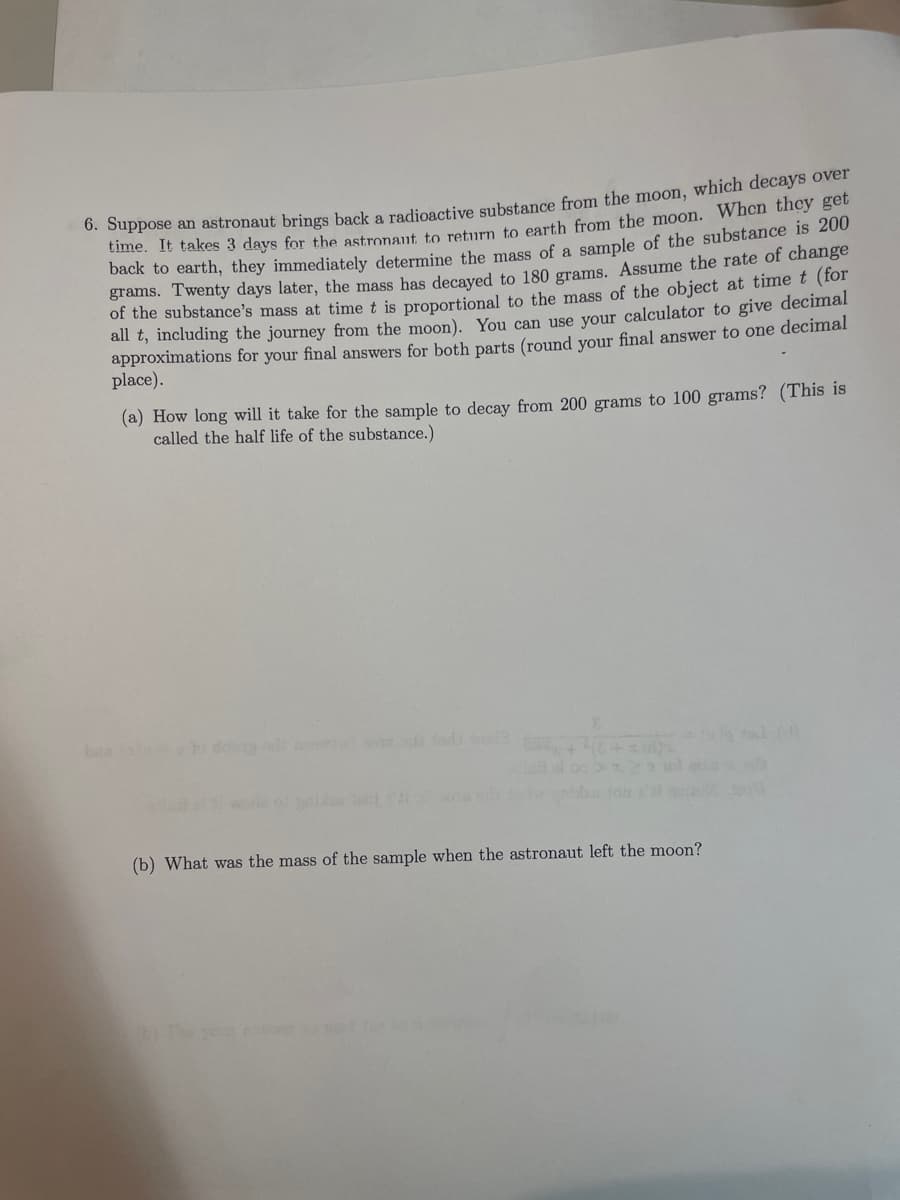Algebra & Trigonometry with Analytic Geometry
13th Edition
ISBN:9781133382119
Author:Swokowski
Publisher:Swokowski
Chapter5: Inverse, Exponential, And Logarithmic Functions
Section: Chapter Questions
Problem 9T
Related questions
Question
Can you help me with my homework question. I been struggling how to do it

Transcribed Image Text:3
x(lnx + 3)2*
5. (a) Let f(x) =
for e≤ x <∞o.
(b) Let g(x) =
Find the area between the of graph y = f(x) and the x-axis
3
x(lnx+3)² + x2023. Show that the area between the graph of y = g(x) and
the x-axis for e< x < oo is finite.
Hint. Notice it's not asking what the area is, it's just asking to show it is finite.

Transcribed Image Text:6. Suppose an astronaut brings back a radioactive substance from the moon, which decays over
time. It takes 3 days for the astronant to return to earth from the moon. When they get
back to earth, they immediately determine the mass of a sample of the substance is 200
grams. Twenty days later, the mass has decayed to 180 grams. Assume the rate of change
of the substance's mass at time t is proportional to the mass of the object at time t (for
all t, including the journey from the moon). You can use your calculator to give decimal
approximations for your final answers for both parts (round your final answer to one decimal
place).
(a) How long will it take for the sample to decay from 200 grams to 100 grams? (This is
called the half life of the substance.)
(b) What was the mass of the sample when the astronaut left the moon?
(b) The your answer to
Expert Solution
This question has been solved!
Explore an expertly crafted, step-by-step solution for a thorough understanding of key concepts.
Step by step
Solved in 3 steps

Recommended textbooks for you

Algebra & Trigonometry with Analytic Geometry
Algebra
ISBN:
9781133382119
Author:
Swokowski
Publisher:
Cengage


Algebra & Trigonometry with Analytic Geometry
Algebra
ISBN:
9781133382119
Author:
Swokowski
Publisher:
Cengage
